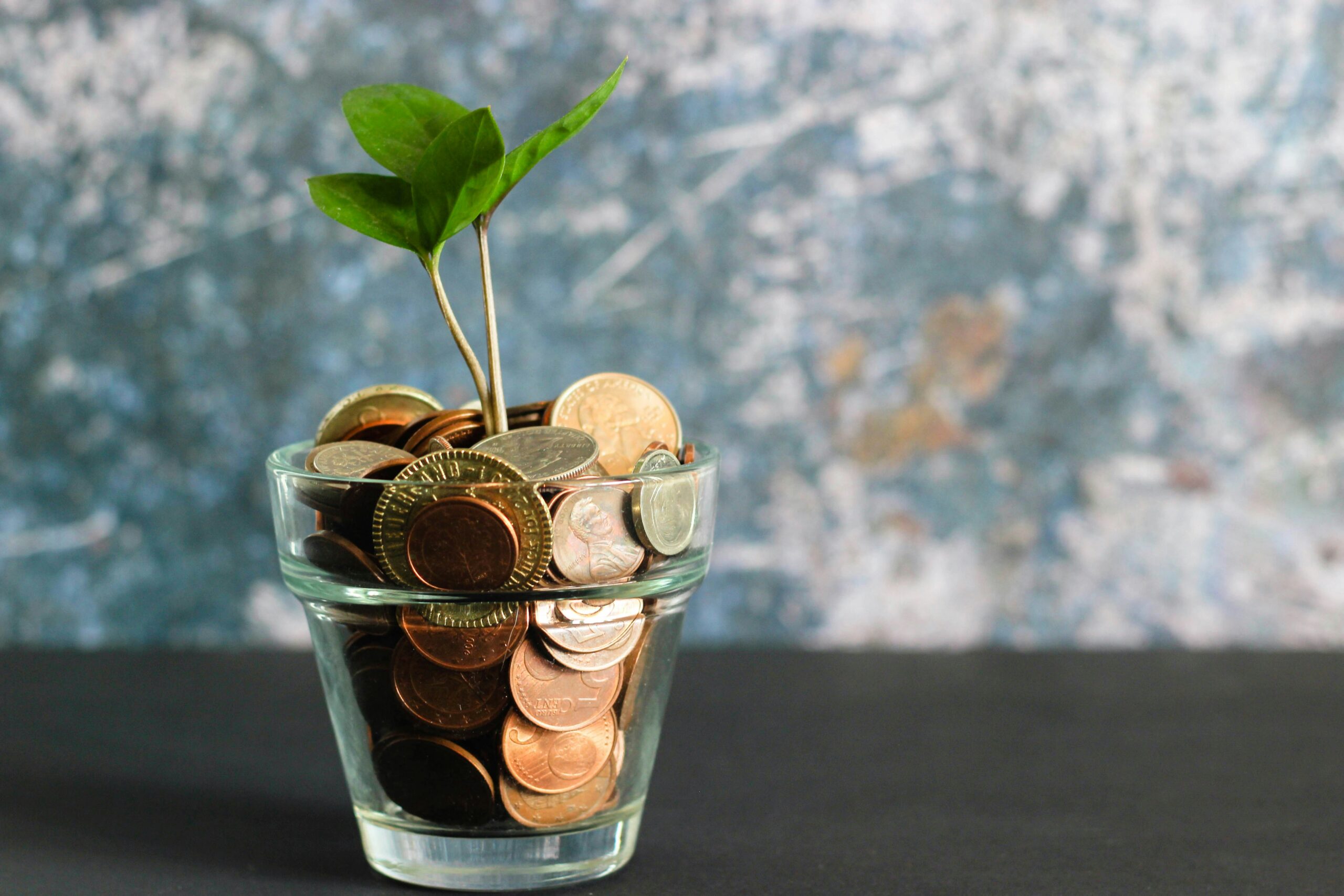Composting 101: How to Turn Food Waste into Nutrient-Rich Soil
Composting is a simple and effective way to turn food waste into nutrient-rich soil for your garden. Whether you’re an experienced gardener or just starting out, composting is a great way to reduce waste, save money, and improve the health of your plants. In this article, you’ll learn the basics of composting, including what materials to use, how to get started, and tips for maintaining your compost pile.
Composting is a natural process that breaks down organic matter into a rich soil amendment that can be used to improve the health of your plants. By composting your food waste, you can reduce the amount of waste that goes into landfills, where it contributes to greenhouse gas emissions. Composting also helps to conserve water, reduce erosion, and improve soil structure. With a little bit of effort and some basic knowledge, you can turn your food waste into a valuable resource for your garden.
The Basics of Composting
What Is Composting?
Composting is the process of breaking down organic matter, such as food scraps and yard waste, into a nutrient-rich soil amendment known as compost. This decomposition is carried out by billions of microorganisms, fungi, and insects that munch away at your waste, turning it into a valuable resource for your garden.
The key to successful composting is to balance the ratio of carbon-rich materials, or “browns,” and nitrogen-rich materials, or “greens.” Browns include dry leaves, sawdust, and shredded paper, while greens include fruit and vegetable scraps, grass clippings, and coffee grounds.
Benefits of Composting
Composting offers many benefits, including:
- Reducing landfill waste: According to the US Environmental Protection Agency, food waste and yard trimmings make up 28% of the US municipal solid waste stream. Composting diverts this waste from landfills, reducing methane emissions and extending the life of landfills.
- Improving soil health: Compost is a nutrient-rich soil amendment that improves soil structure, water retention, and nutrient availability. It also promotes beneficial microorganisms and reduces the need for chemical fertilizers.
- Saving money: Composting can save you money on fertilizer, soil amendments, and waste disposal fees.
Overall, composting is an easy and effective way to turn your food waste into nutrient-rich soil for your garden. By following a few simple steps, you can reduce your environmental impact and improve your garden’s health and productivity.
Setting up Your Compost Pile
Composting is an easy and effective way to turn food waste into nutrient-rich soil for your garden. To get started, you’ll need to set up a compost pile. In this section, we’ll cover the two main aspects of setting up your compost pile: choosing a location and getting the right equipment.
Choosing a Location
When choosing a location for your compost pile, there are a few things to keep in mind. You’ll want to choose a spot that:
- Gets plenty of sunlight: Composting requires heat, and sunlight will help to keep your pile warm.
- Is well-drained: You don’t want your compost pile to become waterlogged, so choose a spot that is well-drained.
- Is easily accessible: You’ll be adding food waste to your compost pile regularly, so choose a spot that is easy to access from your kitchen.
Some good locations for your compost pile include:
- A corner of your yard: This is a great spot if you have a large yard and want to keep your compost pile out of sight.
- A raised bed: If you have a raised bed in your garden, you can use it as a compost pile.
- A compost bin: You can purchase a compost bin or make one yourself, which will keep your compost pile contained and make it easy to access.
Composting Equipment
You don’t need a lot of equipment to start composting, but there are a few things that will make the process easier:
- A compost bin: As mentioned above, you can purchase a compost bin or make one yourself.
- A pitchfork or shovel: You’ll need something to turn your compost pile regularly.
- A kitchen compost bin: This is a small container that you can keep in your kitchen to collect food scraps before adding them to your compost pile.
With these items, you’ll be well on your way to turning your food waste into nutrient-rich soil for your garden.
Ingredients for Composting
Composting is an easy and cost-effective way to turn food waste into nutrient-rich soil that can be used to nourish your plants and garden. To get started, you’ll need to gather the right ingredients. Here’s what you need to know:
Greens and Browns
The key to successful composting is to balance your greens and browns. Greens are high in nitrogen and include items such as vegetable and fruit scraps, coffee grounds, and grass clippings. Browns are high in carbon and include items such as dried leaves, straw, and shredded paper.
To create the perfect balance, aim for a ratio of 3 parts browns to 1 part greens. This will help to speed up the composting process and prevent any unpleasant odors.
Items to Avoid
While many items can be composted, there are a few things that should be avoided. These include meat, dairy, and bones, as well as pet waste and anything treated with chemicals.
These items can attract pests and rodents, and can also slow down the composting process. Instead, stick to vegetable and fruit scraps, eggshells, and yard waste.
By following these simple guidelines, you can create nutrient-rich soil that will help your plants thrive. Happy composting!
The Composting Process
Composting is the process of breaking down organic matter, such as food scraps and yard waste, into a nutrient-rich soil amendment known as compost. This decomposition is carried out by billions of microorganisms, fungi, and insects that munch away at your waste, turning it into a valuable resource for your garden.
Layering Your Compost
To start composting, you will need a compost bin or pile. You can purchase a compost bin or make one yourself using materials such as wood pallets or wire mesh. Once you have your bin or pile, you can start layering your compost.
The first layer should be made up of brown materials, such as dry leaves or straw. The second layer should be green materials, such as food scraps or grass clippings. Continue layering brown and green materials until your bin or pile is full.
Maintaining Moisture and Aeration
To ensure that your compost breaks down properly, you will need to maintain the right level of moisture and aeration. Your compost should be moist, but not too wet. If your compost is too dry, add water. If it is too wet, add more brown materials.
You should also turn your compost regularly to ensure that it is aerated. This will help the microorganisms, fungi, and insects to break down the organic matter more quickly. You can use a pitchfork or shovel to turn your compost.
In summary, composting is a simple and effective way to turn food waste into nutrient-rich soil. By layering your compost and maintaining the right level of moisture and aeration, you can create a valuable resource for your garden.
Troubleshooting Common Issues
Composting is an excellent way to reduce waste and create nutrient-rich soil for your garden. However, like any other process, it can have its challenges. Here are some common issues you may encounter while composting and how to troubleshoot them.
Odor Control
If you notice a foul smell coming from your compost pile, it may be due to an imbalance of green and brown materials. Green materials, such as food scraps and grass clippings, are high in nitrogen and provide the necessary nutrients for the microorganisms responsible for decomposition. Brown materials, such as dry leaves and twigs, are high in carbon and provide structure to the pile.
To control the odor, ensure that you have a balanced mix of green and brown materials in your compost pile. You can also add a layer of soil or finished compost to absorb any excess moisture and neutralize the odor. Turning the pile regularly can also help aerate it and reduce the smell.
Pest Management
Composting can attract pests such as rodents, flies, and ants. To prevent this, ensure that your compost pile is covered and contained. Use a compost bin or build a structure with wire mesh to keep pests out.
Avoid adding meat, dairy, or oily foods to your compost pile as they can attract pests. Instead, stick to vegetable and fruit scraps, eggshells, and coffee grounds. If you notice an infestation, stop adding food scraps to the pile and cover it with a layer of soil to discourage pests.
By following these tips, you can troubleshoot common composting issues and create nutrient-rich soil for your garden.
Composting in Different Settings
When it comes to composting, the process can differ depending on the setting. In this section, we will discuss two different settings: urban areas and rural areas.
Urban Composting
Composting in urban areas can be challenging due to limited outdoor space and a lack of access to yard waste. However, there are still ways to compost in an urban setting. One option is to use a worm bin, which can be kept indoors and is ideal for small spaces. Another option is to use a compost tumbler, which can be placed on a balcony or patio.
If you live in an apartment building, you may be able to set up a community composting program with your neighbors. This can be a great way to share resources and reduce waste.
Composting in Rural Areas
Composting in rural areas is typically easier than in urban areas due to the availability of yard waste and outdoor space. However, it is important to consider the type of composting system that is best suited for your needs.
One option is a traditional compost pile, which can be as simple as a pile of yard waste in a designated area. Another option is a compost bin, which can be purchased or built and is ideal for containing the composting process. A third option is a compost tumbler, which can make the process of turning the compost easier.
Regardless of the type of composting system you choose, it is important to maintain a balance of carbon-rich and nitrogen-rich materials. This can be achieved by adding a mix of brown materials, such as leaves and twigs, and green materials, such as food scraps and grass clippings. It is also important to keep the compost moist and well-aerated to promote decomposition.
By understanding the different options for composting in different settings, you can choose the system that is best suited for your needs and make a positive impact on the environment.
Vermicomposting
Vermicomposting is a type of composting that uses worms to break down organic matter into nutrient-rich soil. This method is great for people who want to compost indoors or who have limited outdoor space. Vermicomposting is also a great way to reduce food waste and create a sustainable source of fertilizer for your plants.
Getting Started with Worms
To get started with vermicomposting, you will need a worm bin. You can purchase a worm bin online or make your own using a plastic container. The container should have a lid and several small holes for ventilation.
Once you have your worm bin, you will need to add bedding material. Bedding material can be made from shredded newspaper, cardboard, or leaves. The bedding material should be moist but not wet.
Next, you will need to add worms to your bin. Red wigglers are the most commonly used worms for vermicomposting. You can purchase them online or from a local worm farm.
After adding the worms, you can start adding food scraps to the bin. Worms will eat most types of organic matter, including fruit and vegetable scraps, coffee grounds, and eggshells. Avoid adding meat, dairy, or oily foods to your worm bin as they can attract pests and create unpleasant odors.
Care and Maintenance
To keep your worm bin healthy, you will need to monitor the moisture level and the temperature. The bedding material should be moist but not wet. If the bedding material is too dry, add a small amount of water. If it is too wet, add more bedding material.
The temperature in your worm bin should be between 55 and 77 degrees Fahrenheit. If the temperature is too cold, the worms will become inactive. If it is too hot, the worms will die.
You should also avoid overfeeding your worms. Only add enough food scraps that they can eat in a day or two. If you add too much food, it can create an unpleasant odor and attract pests.
In summary, vermicomposting is a great way to turn food waste into nutrient-rich soil. Getting started with worms is easy and affordable. With proper care and maintenance, you can create a sustainable source of fertilizer for your plants.
Using Your Compost
When Is Compost Ready?
Once your compost has turned into a dark, crumbly, and earthy-smelling substance, it is ready to use. The length of time it takes for compost to be ready depends on several factors, including the type of materials you used, the size of the compost pile, and the weather conditions. Generally, it takes between three months to a year for compost to mature.
To determine if your compost is ready, you can perform a simple test. Take a handful of compost and squeeze it tightly. If the compost stays together and feels slightly damp, it is ready to use. If it falls apart and feels dry, it needs more time to mature.
How to Use Compost
Compost is a versatile and nutrient-rich soil amendment that can be used in a variety of ways. Here are some ways you can use your compost:
- As a soil conditioner: Mix compost into your garden soil to improve its texture and fertility. Compost helps to loosen heavy soils, improve drainage in sandy soils, and provide essential nutrients to plants.
- As a mulch: Spread a layer of compost on top of the soil around your plants to help retain moisture, suppress weeds, and regulate soil temperature.
- As a potting mix: Mix compost with peat moss, vermiculite, and perlite to create a nutrient-rich potting mix for your container plants.
- As a lawn topdressing: Spread a thin layer of compost over your lawn to improve soil health and encourage healthy grass growth.
Remember to use your compost sparingly, as too much can harm your plants. A general rule of thumb is to use no more than 1/4 to 1/2 inch of compost per application.
Composting and Environmental Impact
Composting is an effective way to reduce the amount of food waste sent to landfills, which in turn helps to reduce greenhouse gas emissions and environmental impact. Here are a couple of ways composting can help the environment:
Reducing Landfill Waste
Food waste is a significant contributor to landfill waste, accounting for around 22% of all landfill waste in the United States. When food waste is sent to landfills, it decomposes and produces methane, a potent greenhouse gas that is 25 times more potent than carbon dioxide. By composting food waste instead of sending it to landfills, you can help to reduce the amount of methane produced and minimize the environmental impact.
Compost and Carbon Footprint
Composting can also help to reduce your carbon footprint. By using compost in your garden, you can improve soil health and reduce the need for chemical fertilizers, which are energy-intensive to produce. According to the EPA, using compost can reduce carbon emissions by up to 8,000 pounds per acre per year. Additionally, composting can help to reduce the amount of water needed for gardening, as compost helps to retain moisture in the soil.
Overall, composting is an easy and effective way to reduce your environmental impact and turn food waste into nutrient-rich soil. By reducing landfill waste and using compost to improve soil health, you can help to reduce greenhouse gas emissions and promote sustainable gardening practices.
Community and Educational Aspects
Composting is not only beneficial for the environment and your garden, but it can also bring communities together and educate people on the importance of sustainability. There are many ways to involve your community in composting, as well as educational programs and workshops to teach others about the process.
Starting a Community Compost
Starting a community compost is a great way to bring people together and reduce food waste. Community composting sites can be located in schools, community gardens, parks, and other public spaces. By composting together, you can create a valuable resource for your community while reducing the amount of organic waste that goes to landfills.
To start a community compost, you will need to gather a group of interested individuals and find a suitable location. You will also need to decide on the type of composting system you want to use, such as a compost bin or a larger-scale compost pile. It is important to educate your community on what can and cannot be composted, as well as how to properly maintain the compost.
Educational Programs and Workshops
Educational programs and workshops are a great way to teach people about composting and sustainability. These programs can be held in schools, community centers, or other public spaces. You can invite experts in the field to speak, or hold hands-on workshops where participants can learn how to start their own compost.
In addition to composting, these programs can also cover topics such as reducing food waste, sustainable gardening practices, and the benefits of composting for soil health. By educating your community, you can help create a more sustainable future for everyone.
Overall, community and educational aspects are important components of composting. By involving your community and educating others, you can create a more sustainable future while also bringing people together.
Advancements in Composting Technology
Composting has come a long way from its traditional methods of simply piling up organic waste and waiting for it to decompose. With advancements in technology, composting has become more efficient, faster, and easier to manage. Here are some of the innovative composting methods and equipment that you should know about:
Innovative Composting Methods
Aerated Static Pile Composting
Aerated static pile composting is a process that involves creating piles of organic waste and then blowing air through the piles to provide oxygen to the microorganisms that break down the waste. This method is faster and more efficient than traditional composting methods because it allows for more control over the composting process. It also produces less odor and requires less space.
Vermicomposting
Vermicomposting is a process that involves using worms to break down organic waste. The worms consume the waste and produce nutrient-rich castings that can be used as fertilizer. This method is ideal for small-scale composting because it is easy to manage and does not require a lot of space. It is also a great way to recycle food waste and reduce the amount of waste that goes to landfills.
Composting Equipment Innovations
Compost Turners
Compost turners are machines that are used to turn and mix compost piles. They are designed to speed up the composting process by providing oxygen to the microorganisms that break down the waste. Compost turners come in different sizes and designs, from small hand-cranked models to large tractor-mounted machines.
In-Vessel Composting Systems
In-vessel composting systems are enclosed containers that are used to compost organic waste. The containers are designed to provide optimal conditions for the microorganisms that break down the waste, such as temperature, moisture, and oxygen. In-vessel composting systems are ideal for large-scale composting because they are efficient, fast, and produce high-quality compost.
In conclusion, composting technology has come a long way, and there are now many innovative methods and equipment available to make the process faster, more efficient, and easier to manage. Whether you are composting on a small scale or a large scale, there is a composting method and equipment that will work for you.
Frequently Asked Questions
Why is composting beneficial for the environment?
Composting is an eco-friendly way to manage food waste. When food scraps are sent to landfills, they decompose without oxygen and produce methane, a potent greenhouse gas that contributes to climate change. Composting helps reduce the amount of waste sent to landfills and turns organic waste into nutrient-rich soil. By composting, you can help reduce greenhouse gas emissions and create a valuable resource for your garden.
What materials can be included in a compost bin?
Compostable materials include fruit and vegetable scraps, eggshells, coffee grounds, tea bags, yard waste, and shredded paper. Avoid adding meat, dairy, or oily foods to your compost bin, as they can attract pests and slow down the composting process. Also, make sure to avoid adding any materials that have been treated with pesticides or herbicides, as they can harm beneficial microorganisms in the compost.
Can you describe the composting process?
Composting is a natural process that involves microorganisms breaking down organic matter into nutrient-rich soil. To start composting, you’ll need a compost bin or pile, which should be filled with a mixture of “green” and “brown” materials. Green materials include fruit and vegetable scraps, while brown materials include leaves, twigs, and shredded paper. You’ll also need to keep the compost moist and aerated to ensure that the microorganisms have the oxygen and water they need to thrive.
What are the top benefits of composting for soil health?
Composting has numerous benefits for soil health. Compost improves soil structure, which helps plants grow better by allowing their roots to penetrate the soil more easily. It also increases the soil’s ability to retain water, which reduces the need for watering. Compost also adds nutrients to the soil, which can help plants grow stronger and healthier.
How can you create the most nutrient-rich compost from kitchen waste?
To create nutrient-rich compost from kitchen waste, make sure to include a mix of green and brown materials in your compost bin or pile. You can also add other organic materials, such as grass clippings or coffee grounds, to boost the nutrient content. Make sure to keep your compost moist and aerated, and turn it regularly to ensure that all of the materials are broken down evenly.
What is the typical timeframe for composting food scraps into usable soil?
The timeframe for composting food scraps into usable soil can vary depending on a number of factors, such as the size of your compost bin or pile, the temperature and moisture levels, and the mix of materials. In general, it can take anywhere from a few weeks to several months for food scraps to fully decompose into nutrient-rich soil. To speed up the process, make sure to keep your compost moist and aerated, and turn it regularly.





